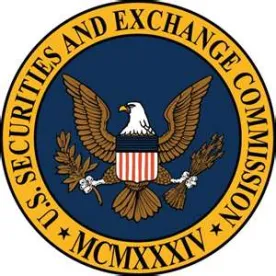Bringing quantitative analyses to the debate over high-frequency trading, two working papers recently made available by the SEC’s Division of Economic and Risk Analysis present economic models suggesting that there are market benefits from certain forms of high-frequency and low-latency trading. In light of the on-going interest in high-frequency trading among various regulators, the recognition of market benefits is an important development.
The first paper, Automated Liquidity Provision, by Austin Gerig, an SEC staff economist and David Michayluk of the University of Technology, Sidney, addresses automated systems designed to provide market liquidity by trading at high frequency across different exchanges and securities. These automated liquidity providers have largely replaced traditional market makers, and the authors studied the effects of this automation on pricing and transaction costs.
The authors created a model which initially assumed that each security in a simulated market of multiple securities was associated with its own traditional, non-automated market maker. The authors then introduced an automated market maker into the model and observed the resulting effect on the simulated market.
The authors found that introduction of an automated liquidity provider resulted in better and more efficient prices, smaller profits for informed investors, and smaller losses for uninformed investors. It also resulted in an increase in trading volume and a reduction in overall transaction costs, assuming uninformed investors increased their trading activity due to lower costs. The traditional market makers in the model were largely priced out of the market as the automated market maker ultimately transacted the majority of the simulated order flow.
The authors explained these results by noting automated liquidity providers can more quickly and accurately process large amounts of relevant information than their human counterparts when setting prices. For example, by analyzing large amounts of data, automated liquidity providers can identify more readily than traditional market makers different securities whose prices are correlated — information that gives the automated liquidity providers a trading advantage over traditional market makers.
The second paper, Liquidity Risk, Speculative Trade and the Optimal Latency of Financial Markets, is co-authored by Daniel Fricke of the Institute for New Economic Thinking and Saïd Business School, University of Oxford, and Austin Gerig, co-author of the paper discussed above. In this paper, the authors observed that most liquidity in current financial markets is provided though the speculative activity of low-latency/high-frequency traders, rather than through the activity of designated market makers. The authors studied the extent to which low-latency/high-frequency trading affects liquidity and liquidity risk and whether extremely low latency in markets can be beneficial.
The authors first created a baseline model of a single security that is traded by public investors. Next, a liquidity provider was introduced into the model which engaged in short-term trading activity, regularly submitting orders based on its estimate of the equilibrium price. The authors found that the presence of the liquidity provider in the model substantially reduced the public investors’ minimum liquidity risk — measured as the difference between the equilibrium price at the time the investor arrived in the market and the price ultimately realized by the investor.
The authors then introduced an additional, highly liquid security into the simulated market, and studied the resulting effect on the original, less liquid security. To the extent the prices for the securities in the market were correlated, the authors found that the trading activity of the liquidity provider had the beneficial effect of increasing the liquidity of the original, previously less liquid security and further decreasing liquidity risk.
Interestingly, the authors also found that under certain circumstances it was optimal from the investors’ perspective for there to be zero latency in the market, i.e., for orders to transact immediately when placed in the market. The authors observed that although many others have described the current low-latency environment as an “arms-race” — in which traders make substantial investments to reach the market more quickly than others for their own individual benefits — the authors believe that their model is the first to demonstrate a market benefit to low-latency trading.
It is likely that high frequency trading, in all its many variations, will continued to be studied and debated by scholars, regulators, market participants and lawyers well into the foreseeable future.






 />i
/>i

